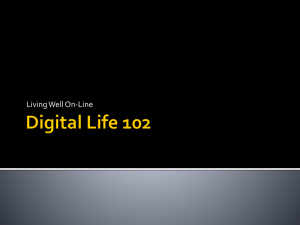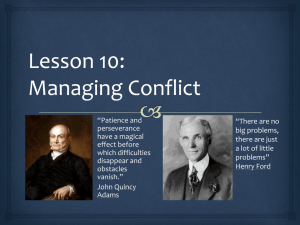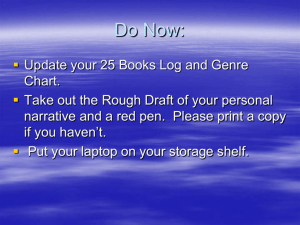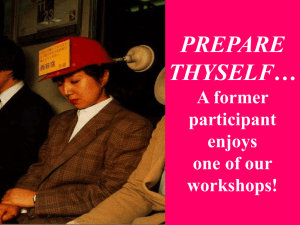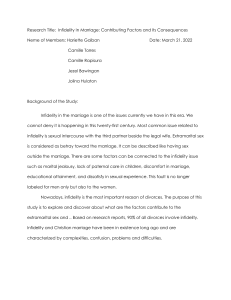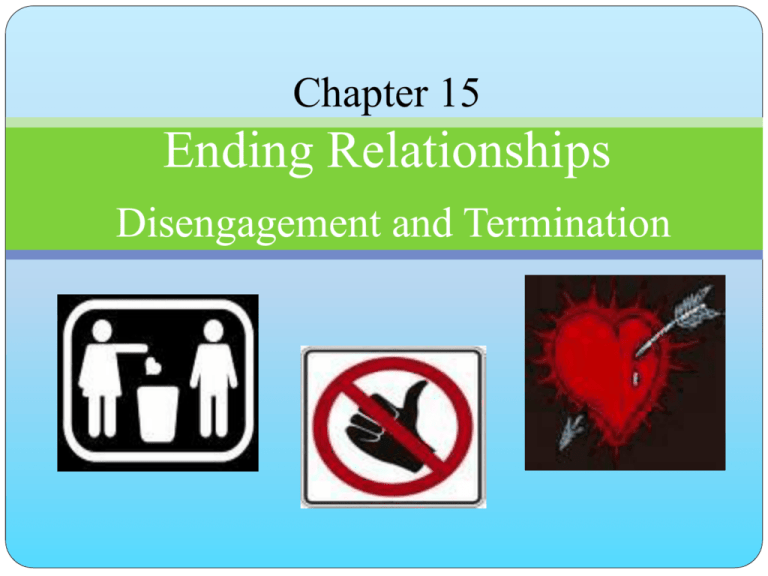
Chapter 15
Ending Relationships
Disengagement and Termination
A few quotes to consider
This sucks! I can't think! I can't sleep! I can't eat! Is love supposed
to hurt so?
The greatest experience we can ever have is usually not a
welcomed one at that time.
It amazes me so that we enter a relationship whole and leave it
only a half.
I looked in the mirror this morning, but I only saw me without you.
I see this pain as a blessing. At least I know I have experienced
love—some people will never know such a blessing.
When we wear our heart on our sleeve, nobody notices our great
butts!
If the government could tax broken hearts, there would be no
deficit.
Why Relationships End
Relationship endings are inevitable (why?)
85% of adults in US have experienced a
romantic breakup.
Pain of losing a relationship is worse when it
means losing identity, networks,
emotional/sexual gratification, resources, even
children
So why do relationships end?
17-year study of married couples
Infidelity ** (22%)
Lack of communication #
Incompatibility/lack of
Physical or psychological
shared interests (19%)
Drinking/drugs **
Grew apart
Partner’s personality #
abuse **
Loss of love #
Not meeting family
responsibilities **
Work problems
**Women more than men;
# men more than women
Major Factors
Infidelity and Interest in a Third Party
Forms of infidelity: Sexual, emotional, and both
Socio-evolutionary theory and gender differences
Available alternatives (social exchange theory)
Incompatibility
Personality similarity is a good thing
Discrepancy in attitudes and values tends to lead to
breakups
Ethnic and age differences can be problematic
Differences in education, intelligence, and health
Differences in emotional involvement and sexual
compatibility
Major Factors, cont.
Alcohol & Drugs
Co-dependency
Growing apart
Gradual atrophy
Loss of love
Chronic dissatisfaction eats away at the positive
feelings associated with love—feelings of joy, warmth,
contentment, passion
Relationship disillusionment
Positive illusions fade
Communication as a cause
Emotional or Physical Withdrawal
Lack of support and listening
Demand-withdraw conflict patterns
Negative Communication
Poor conflict management
Negative emotional expression (e.g., contempt,
sarcasm)
Lack of Openness and Intimacy
Abusive communication
Using communication as psychological abuse
Duck’s Phase Model
Breakdown: Relationship Dissatisfaction
Threshold: “I can’t stand this anymore!!”
Phase 1: The Intrapsychic Phase
Threshold: “I’d be justified in withdrawing.”
Phase 2: The Dyadic Phase
Threshold: “This just won’t work.”
Phase 3: The Social Phase
Threshold: “It’s now inevitable.”
Phase 4: The Grave-Dressing Phase
Emotional Repair & Relationship Realignment
Resurrection
Knapp’s Staircase Model
Knapp’s Stages
Differentiating
Function: to restore individual identity and
autonomy--(opposite of integrating)
Sample Dialogue:
“I hate going to parties.”
“I don’t understand that; I love to
socialize.”
Circumscribing
Function: to avoid in-depth disclosure, personal
communication (opposite of intensifying)
Sample Dialogue:
“Did you have a good day at work?”
“Yeah. What time will dinner be ready?”
Stagnating
Function: to achieve psychological separation
(communication is at a standstill)
Sample Dialogue:
“Let’s not get into this again.”
“Yeah, it’s pointless to talk about it.”
Avoiding
Function: to achieve physical separation
(sometimes as a testing ground)
Sample Dialogue:
“Let’s take a break for a while.”
“I’ll move my things out.”
Terminating
Function: to break up while minimizing
negative affect and negative consequences
Sample Dialogue:
“This isn’t working out.”
“Yes, it’s been coming for a long
time… let’s break up…”
Catastrophe Theory
Some relationships do not gradually unwind through stages
of dissolution, but end suddenly (“sudden death”).
In one study, about 25% of people reported their
relationship ended because of a single critical event.
Such events include:
Infidelity
Serious arguments
Physical violence
The discovery of incompatibility
Strategies for Breaking Up
Unilateral (One person)
Indirect
Direct
Avoidance
Relational Ruses
Withdrawal of Support/Affection
Pseudo de-escalation
Cost Escalation
Direct Dump (fait accompli)
Dating other people
Relationship talk
Justifications
Threats/bullying
Positive tone
De-escalation
Can use just one or several
Bilateral (Both persons)
Fading Away
Blame Game
Negotiated Farewell
More likely to be friends
Negative Outcomes of Breakups
Negative Emotions
Loneliness
Financial Consequences
Effects on Children
Living with feuding parents vs. dealing with a divorce
Feeling “caught” between parents
The intergenerational transmission of divorce
Health Consequences
Positive Outcomes of Breakups
Personal Positives:
Sense of relief—threats are gone; ambiguity &
conflict are over.
Increased self-sufficiency
Ability to handle life on one’s own
Relational Positives:
Knowing more about how to communicate with
partners—not jumping into another relationship too
quickly
Knowing more about how to develop, maintain,
and terminate relationships
Positive Outcomes, cont.
Environmental Positives:
Being able to concentrate more on school, work,
and friends
Future Positives:
Knowing what you want (or do not want) in
future relationships
Closing note…
All of these positives depend on the ability to reflect
objectively on the relationship and its termination process.
Not to assign blame or justify, but to understand.
Paradoxically, part of the objectivity is understanding
emotions.
Are you Angry? Hurt? Sad? Guilty? Resentful? Relieved?
Can you forgive? Can you ask for forgiveness?
Can you still be friends or at least appreciate the good in each
other that initially attracted you?

